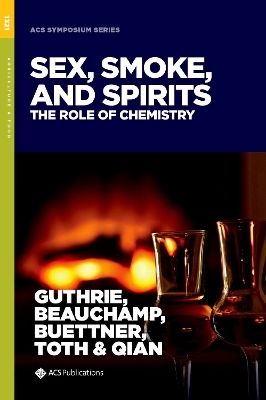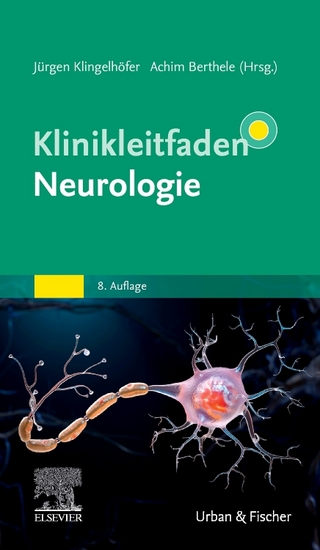
Sex, Smoke, and Spirits
Oxford University Press Inc (Verlag)
978-0-8412-3467-3 (ISBN)
Compiling recent advances in the chemistry of sex, smoke, and spirits, this work showcases applications of common methods of analysis and mechanistic learning to diverse subjects. This work addresses emerging concerns about environmental smoke, the under-representation of the chemistry of attraction, and challenges in the analyses of alcoholic beverages. Researchers practicing these methods and those active in the chemical origins of sensations, including analysis
and mechanisms of formation, will find this book useful.
Brian Guthrie currently performs research to understand the chemical and physical origins of human sensations during the oral processing of food. He has worked in the food and ingredients industries with responsibilities spanning from knowledge building to utilizing fundamental science to formulation and product development. Brian has also worked extensively in food sensory science, from studies on the peripheral cellular events of olfaction and gustatory signal transduction to developing the understanding of consumer preference and choice. He has also been involved in exploring the use of sensory technology in food and ingredient applications. Jonathan Beauchamp holds a physics degree from University College London, UK and a PhD in environmental physics from the University of Innsbruck, Austria. He currently works as a research associate at the Fraunhofer Institute for Process Engineering and Packaging IVV in Freising, Germany, where he is group manager for volatile emissions and deputy head of the department of sensory analytics. Jonathan's primary research focus encompasses the characterization of emissions of volatile organic compounds (VOCs) in the field of food and flavor, in non-food applications, and from the human volatilome, primarily via exhaled breath. His further scientific interests and activities relate to the detection and perception of odor-active compounds in human olfaction. Jonathan's technical expertise revolve around the use of chemical ionization mass spectrometry (CIMS), in particular proton transfer reaction mass spectrometry (PTR-MS) for analyzing volatile emissions in real time. Jonathan has published over 50 papers and book chapters that have been cited over 1000 times, and he has coedited a previous book within this American Chemical Society (ACS) Symposium Series. He has co-organized and chaired several ACS symposia and has been on the organizing committee of other international conferences, notably the PTR-MS Conference series and the International Association of Breath Research (IABR) Breath Summit series. He has been an active member of ACS and the Agricultural and Food Chemistry Division (AGFD) since 2013 and additionally is a member of the IABR board. Jonathan is affiliated with several journals, including being a current associate editor of Journal of Breath Research, and he sits on the editorial boards of Heliyon and Food Packaging and Shelf Life. Andrea Buettner is a professor of flavor science (a food chemist with a PhD in aroma research) and currently holds the Chair of Aroma and Smell Research at Friedrich-Alexander-Universitat Erlangen-Nurnberg (FAU) in Erlangen, Germany. She is also deputy director of the Fraunhofer Institute of Process Engineering and Packaging IVV in Freising, Germany and head of the department of sensory analytics. She recently coinitiated the Campus of the Senses initiative, which she also currently heads, that combines interdisciplinary basic research with application-oriented research on the subject of digital sensory transition. Andrea's work has demonstrated the importance of the combined effects of the food and matrix composition, saliva, mucosa, mastication, and swallowing on flavor release and perception. She has identified new odorous compounds with a special focus on citrus and other food materials and has worked on structure-odor relationships. Recent work additionally addresses packaged foods and articles of everyday use in relation to their chemosensorially active constituents. She specializes in chemical trace analysis, monitoring of physiological processes, psychophysical measurements of sensory data, and determination of chemosensorially active and volatile compounds and their metabolites in vivo. Recently, Andrea has broadened her research interests to include the digitization of the human senses, monitoring volatiles and chemosensorially active compounds in the physiological context, and exploration of the physiological impact of such derivatives in humans. Her work has contributed to our understanding of psychological and behavioral aspects in human nutrition. Andrea has been awarded with several accolades including the ACS Fellow Award from the Agricultural and Food Chemistry Division (AGFD), the 2013 Nutricia Science Award, the 2012 Danone Innovation Prize, the ACS Young Investigator Award (AGFD), and the 2010 Kurt-Taufel Award for Young Scientists. Stephen Toth is a senior research investigator in the research analytical services department at International Flavors and Fragrances (IFF). He has spent his lengthy career at IFF working in fragrance delivery, chromatography, and ultimately the structure elucidation department. He is active in the Agricultural and Food Chemistry Division of the American Chemical Society and currently serves as treasurer of the division. He has organized several analytical and flavor chemistry symposia at the American Chemical Society's national meetings. He holds a B.S. and M.S. in chemistry from Seton Hall University and a PhD in food science from Rutgers University. Michael C. Qian received his BS in chemistry from Wuhan University and a PhD from University of Minnesota. He is a full professor of flavor chemistry at Oregon State University. Professor Qian's research at Oregon State University involves aroma and flavor chemical and biochemical generation in food and beverage systems, with a focus on wine and wine grapes. He has made significant contributions to the basic understanding of viticultural practices on volatile and volatile precursor formation in wine grapes and the implication on wine quality. He applied the flavor chemistry theory and principle and pioneered the flavor chemistry research in Chinese liquor (baijiu). Dr. Qian has published extensively in J. of Agricultural and Food Chemistry, Food Chemistry, J. Chromatography A, and other leading journals. His publications have been cited 3800 times by international researchers, with an h-index of 36 and i10-index of 64. Due to his outstanding contribution to the area of flavor chemistry, he was elected as the Fellow of Agricultural and Food Chemistry Division of the American Chemical Society. Dr. Qian is a leader in his profession. He has organized over ten flavor chemistry symposia at the American Chemical Society's national meetings as well as the Pacifichem conference. He coedited five ACS Symposium Series books on flavor chemistry. He is the initiator and the chair of the International Flavor and Fragrance Conference series. He has held various officer positions in the Agricultural and Food Chemistry Division of the American Chemical Society, including the chair position of the division in 2014. He is the recipient of the Distinguished Service Award from the Agricultural and Food Chemistry Division (AGFD) of the American Chemical Society of 2018 due to his outstanding service contributions to the field of agricultural and food chemistry to improve the safety, supply, or quality of food.
Preface
Chapter 1. Fragrance and Attraction, Anubhav P. S. Narula
Chapter 2. "Candy Is Dandy": The Mind of Sexuality as Suggested by a Mind Genomics Experiment, Attila Gere, Ryan Zemel, Petraq Papajorgji, and Howard Moskowitz
Chapter 3. The Chemistry of Chocolate and Pleasure, Michael H. Tunick and Jennifer A. Nasser
Chapter 4. Smoky, Vanilla, or Clove-Like?, R. Ghadiriasli, K. Lorber, M. Wagenstaller, and A. Buettner
Chapter 5. Thermal Decomposition of Wood-Derived Organic Matter under Specific Industrial Process Conditions, Johannes Kiefl, Sandra Boerding, Birgit Kohlenberg, Michael Backes, Petra Slabizki, Smita Raithore, and Gerhard Krammer
Chapter 6. Changes in Aroma and Sensory Profile of Food Ingredients Smoked in the Presence of a Zeolite Filter, XinLing Chua, Elizabeth Uwiduhaye, Petroula Tsitlakidou, Stella Lignou, Huw D. Griffiths, David A. Baines, and Jane K. Parker
Chapter 7. Development and Performance Characterization of a Lab-Scale Smoke Generator, Yuanyang Zhang, Graham Eyres, Patrick Silcock, and Jim Jones
Chapter 8. Formation of Desired Smoky Key Odorants in Wheat Beer: A Comparison with the Undesired Toxicologically Relevant Styrene, Valerian Kalb and Michael Granvogl
Chapter 9. On the Importance of Phenol Derivatives for the Peaty Aroma Attribute of Scotch Whiskies from Islay, V. Mall and P. Schieberle
Chapter 10. Rapid Quantitation of Phenolic Compounds in Islay Single Malt Scotch Whiskies by Direct Injection Mass Spectrometry, Jonathan Beauchamp, Sonja Biberacher, and Shang Gao
Chapter 11. Overview of Distilled Spirits, Michael C. Qian, Paul Hughes, and Keith Cadwallader
Chapter 12. Current Practice and Future Trends of Aroma and Flavor Research in Chinese Baijiu, Wenlai Fan, Yan Xu, and Michael Qian
Chapter 13. Flavor Chemistry in Baijiu with Sesame Flavor: A Review, Juan Wang, Mingquan Huang, Jinglin Zhang, and Jihong Wu
Chapter 14. Aroma Comparison of Tibetan "Qingke" Liquor with Other Chinese Baijiu, Yueqi An, Yanping Qian, Shuang Chen, and Michael C. Qian
Chapter 15. Research Progress on Aroma Compounds in Wuliangye, Dong Zhao and Jia Zheng
Chapter 16. Aroma Profile of Folium isatidis Leaf as a Raw Material of Making Bingqu for Chixiang Aroma- and Flavor-Type Baijiu, Zhanglan He, Wenlai Fan, Yan Xu, Songgui He, and Xinyi Liu
Chapter 17. Influence of Ethanol on Flavor Perception in Distilled Spirits, Zhuzhu Wang, Chelsea M. Ickes, and Keith R. Cadwallader
Chapter 18. Characterization of the Key Aroma Compounds in Rum Made from Sugar Cane Juice by Means of the Sensomics Approach, Laura Franitza, Peter Schieberle, and Michael Granvogl
Chapter 19. Implementation of Stir Bar Sorptive Extraction (SBSE) for the Analysis of Volatile Compounds in Tequila, Miriam G. Rodriguez-Olvera, Luisa I. Rodriguez-Rodriguez, Michael C. Qian, Yan Ping Qian, and Pedro A. Vazquez-Landaverde
Editors' Biographies
Author Index
Subject Index
| Erscheint lt. Verlag | 4.11.2020 |
|---|---|
| Reihe/Serie | ACS Symposium Series |
| Verlagsort | New York |
| Sprache | englisch |
| Maße | 181 x 260 mm |
| Gewicht | 992 g |
| Themenwelt | Medizin / Pharmazie ► Medizinische Fachgebiete ► Neurologie |
| Naturwissenschaften ► Biologie ► Biochemie | |
| Naturwissenschaften ► Biologie ► Humanbiologie | |
| Naturwissenschaften ► Biologie ► Zoologie | |
| Naturwissenschaften ► Chemie ► Physikalische Chemie | |
| Technik ► Umwelttechnik / Biotechnologie | |
| ISBN-10 | 0-8412-3467-1 / 0841234671 |
| ISBN-13 | 978-0-8412-3467-3 / 9780841234673 |
| Zustand | Neuware |
| Haben Sie eine Frage zum Produkt? |
aus dem Bereich


